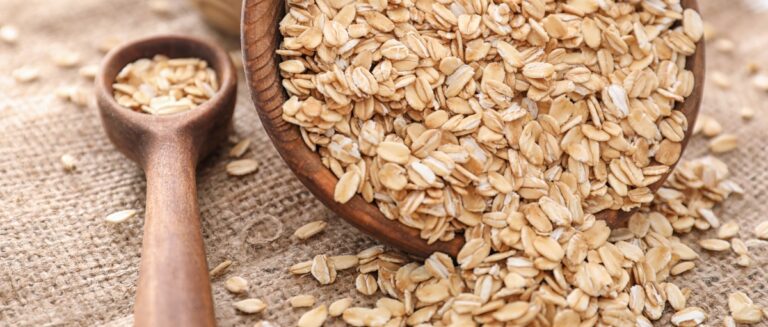Do you miss the defined cheekbones and sculpted jawline of your youth? You’re not alone if you’ve noticed some extra fullness in your face with age. A recent survey shows 73% of adults over 50 are concerned about facial aging and excess fat.
While you may have heard about facial exercises or jade rollers that promise to slim the face, spot reduction is a myth. You can’t selectively burn fat from one area of your body.
Instead, the key to achieving a slimmer face is to lose weight overall through diet, exercise, and lifestyle changes.
The Truth About Targeted Fat Loss
Before we discuss strategies for slimming your face, it’s important to understand how fat loss actually works. Many people believe that exercises like facial yoga or chin lifts can target fat loss in specific areas of the body. However, research shows that spot reduction is a myth.
Here’s the truth: when you lose weight, you lose fat throughout your entire body, not just in one area. Your genetics largely determine where you store fat and in what order you lose it. For some people, the face is the first place they notice weight gain or loss. For others, it may be the belly, hips, or thighs.
You need to focus on overall weight loss through a calorie deficit to lose weight in your face. This means consuming fewer calories than you burn through diet and exercise. As you lose total body fat, you will gradually see a reduction in facial fat as well.
Targeted fat loss is not possible, facial exercises do not selectively burn facial fat, overall fat loss through a calorie deficit is necessary to slim the face, and genetics determine how and where you lose fat from your body.
How to Lose Face Fat: Slim Your Face with These Diet Strategies
What you eat plays a big role in facial fat. Certain foods can contribute to weight gain and bloating, but others can help you slim down and achieve a more sculpted look.
Focus on Whole Foods
One of the most effective ways to lose weight and achieve a slimmer face is to focus on eating whole, unprocessed foods. These include fruits and vegetables, lean proteins like chicken, fish, legumes, whole grains like quinoa, brown rice, and oats, and healthy fats like avocados, nuts, and olive oil. Whole foods are packed with nutrients that keep you full and satisfied, making you less likely to overeat. They also provide fiber, which helps regulate digestion and can reduce bloating that contributes to facial puffiness.
In contrast, processed foods like chips, crackers, and baked goods are often high in refined carbs and added sugars, which can lead to weight gain. One study found that people who ate a diet high in refined carbs had more visceral fat, the type that accumulates around organs and can give their faces a puffy appearance.
Limit Sodium
Sodium is another major culprit in facial bloating. When you consume too much salt, your body holds onto extra water to maintain the proper electrolyte balance. This can cause your face to look swollen and puffy, especially in the morning. To reduce facial bloating, limit high-sodium foods like processed meats, canned soups and vegetables, salty snacks, fast food and takeout meals, and condiments like soy sauce and salad dressings.
Stay Hydrated
Hydration is also essential for health and reduces facial puffiness by preventing water retention. Drinking 8-10 glasses of water daily and including water-rich foods like cucumbers and watermelon can keep your face slim. Always carry a reusable water bottle to remind yourself to stay hydrated.
By focusing on whole foods, reducing sodium, staying hydrated, and getting plenty of fiber, you can create a fat-burning meal plan to help slim your face and improve your overall health. Next, we’ll look at how exercise can accelerate your results.
How To Lose Face Fat: Cardio and Strength Training Strategies
In addition to cleaning up your diet, exercise is vital to losing weight in your face. Cardio helps you burn calories and reduce overall body fat, while strength training builds lean muscle that boosts your metabolism.
Get That Cardio In
Cardio is any type of exercise that raises your heart rate and makes you breathe harder. This includes activities like brisk walking, jogging or running, cycling, swimming, and dancing. The American Heart Association recommends getting at least 150 minutes of moderate-intensity cardio per week or 75 minutes of vigorous activity. You can break this up into 30-minute sessions five times a week or shorter 10-15 minute bursts throughout the day.
Aim for the higher end of this range to lose facial fat and gradually increase your duration or intensity over time. Cardio burns calories during your workout and keeps your metabolism elevated for hours afterward, helping you slim down faster.
Integrate Some Strength Training
While cardio is great for burning fat, strength training is essential for building lean muscle that boosts metabolism. The more muscle you have, the more calories you burn at rest, making it easier to lose weight and keep it off. Aim to strength train all your major muscle groups (legs, hips, back, abs, chest, shoulders, arms) at least twice a week.
Good exercises include squats, lunges, push-ups, rows, planks, chest, shoulder, and bicep curls. Use weights that challenge you but allow you to complete 10-15 reps with good form. As you get stronger, gradually increase your weight or resistance to keep seeing results.
The Surprising Lifestyle Factors That Prohibit a Slimmer Face
Exercise and diet are key to losing weight in your face, but they’re not the only pieces of the puzzle. Your daily habits and lifestyle choices also play a big role in how quickly you see results.
Get Enough Sleep
Skimping on sleep does more than leave you feeling tired and cranky. It can also sabotage your weight loss efforts, including in your face. Studies show that people who don’t get enough quality sleep tend to have higher levels of the hunger hormone ghrelin and lower levels of the fullness hormone leptin. This can lead to overeating and weight gain.
Over time, this excess fat can contribute to a puffy, bloated-looking face. To keep your hunger hormones in check and your face looking slim, aim for 7-9 hours of quality sleep per night. Create a relaxing bedtime routine, avoid caffeine late in the day, and keep your bedroom cool, dark, and quiet.
Find Ways to Relax
Chronic stress can also lead to weight gain, especially in the face, by increasing cortisol levels and driving people towards high-calorie foods. To combat this, engage in relaxation practices like deep breathing, meditation, or yoga, and maintain regular exercise.
Reduce Alcohol
A glass of wine with dinner or a cocktail on the weekends is fine, but overdoing it on alcohol can lead to facial bloating and weight gain. Alcohol is high in empty calories and can also increase appetite, making you more likely to overeat.
Your Roadmap to a More Sculpted, Slimmer Face
Losing weight in your face is possible—but it takes a comprehensive approach that goes beyond quick fixes and targeted exercises. You can gradually slim down your face and improve your overall health by making sustainable changes to your diet, exercise routine, and lifestyle habits.
Remember, losing weight in your face is a gradual process that requires patience and consistency. Don’t get discouraged if you don’t see results right away—stick with your healthy habits and trust that progress will come. As you begin to lose overall body fat, you’ll notice a slimmer, more defined face in the mirror. Beyond the aesthetic benefits, you’ll also feel more energized, confident, and healthy in your own skin.
So start small, stay consistent, and celebrate your progress along the way. With the right mindset and strategies, a slimmer, more sculpted face is well within reach — no matter your age or starting point.
Sources
NCBI. (2018, October 9). Cardiovascular health and sleep disorders. Journal of Clinical Sleep Medicine. https://www.ncbi.nlm.nih.gov/pmc/articles/PMC6319576/
JMP Online. (2014). Impact of sleep on cardiovascular health. Journal of Medical Practice and Research. https://www.jmptonline.org/article/S0161-4754(14)00274-7/abstract
NCBI. (2019, September 4). Sleep and cardiovascular health. Journal of Clinical Sleep Medicine. https://www.ncbi.nlm.nih.gov/pmc/articles/PMC6863639/
American Heart Association. (2023, May 31). AHA recommendations for physical activity in adults. https://www.heart.org/en/healthy-living/fitness/fitness-basics/aha-recs-for-physical-activity-in-adults
National Heart, Lung, and Blood Institute. (n.d.). Sleep deprivation and its health effects. https://www.nhlbi.nih.gov/health/sleep-deprivation/health-effects











